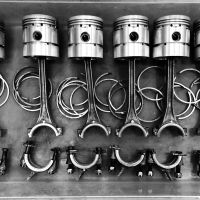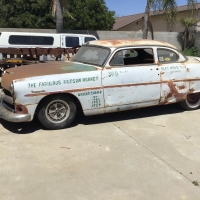Power Steering Conversion using Available Components
Did some preliminary research on power steering for Hudsons, and fell down the internet tube rabbit hole. It appears Hudson opted for a servo assist system, which allowed the manual steering box to be used, along with existing Center Point Steering geometry. Assist was via hydraulic cylinder, along with a servo valve which "sensed" input from the driver through the steering box. The photo is from a recently sold setup here on the Forum: 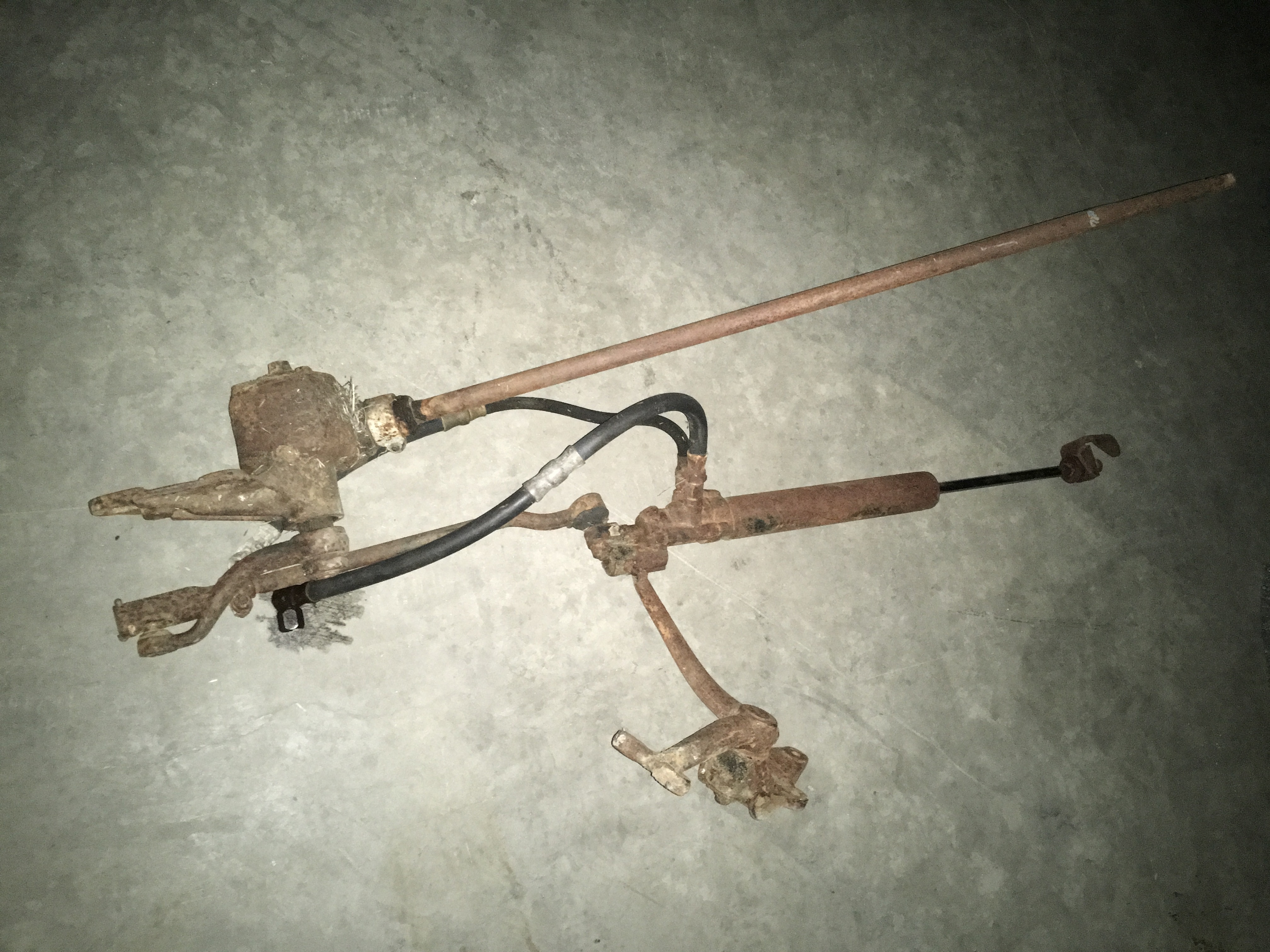
Note the servo valve, which mounts on the drag link, is missing in this photo.
I realize this is old stuff to most HET members and folks on this forum, but maybe the next paragraphs and photos aren't.
Ford used an similar system for power steering, and introduced it at the same time as Hudson. The way things work in Detroit is vendors develop new products and systems at the behest of a manufacturer, and the vendor then sells said product/system to other manufacturers. I suspect the servo system was originally developed for Ford and then sold to Hudson after the fact, as I believe Ford first had it in 1953 and it didn't show up on Hudsons until 1954. In the Ford system, the assist cylinder and servo valve are part of the center link:
When I restore a vehicle, I try to make it so that any modification I make to the car can be undone by the next caretaker. I had a fairly highly modified, stock appearing car about 15 years ago which I sold to a friend - along with all the bits I'd taken off. He didn't desire such a wild ride, so he detuned it and re-mounted a bunch of the things I'd given him. So here's the thing - the cylinders and servo valves are widely available in the aftermarket, as Ford made millions of vehicles with this system.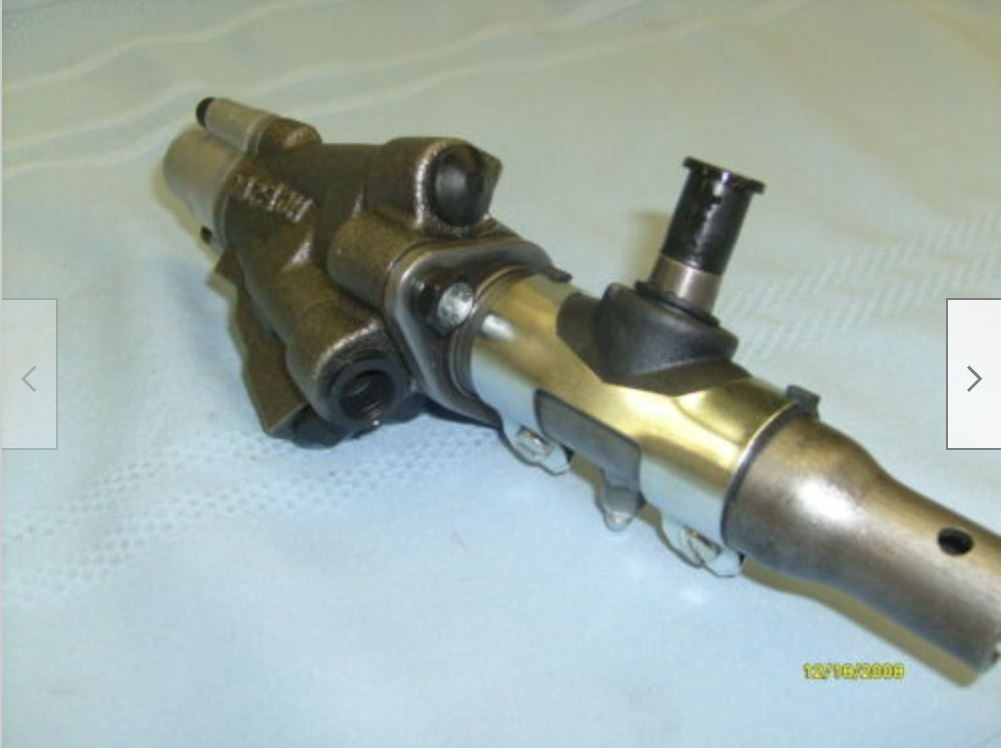
Brand new servo valve.
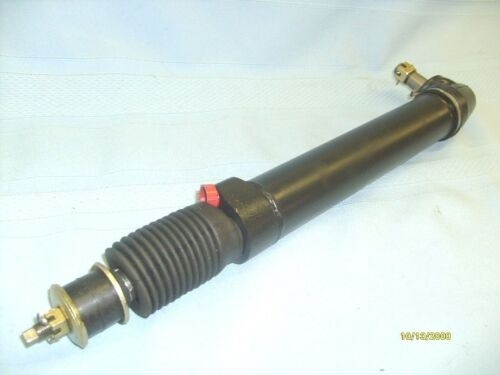
New assist cylinder.
The assist cylinder doesn't really care where it's installed on the drag link, as it's not really part of the geometry of the steering system. On Hudsons, the attachment was part of the bell crank arm - but doesn't have to be. The cylinder can be fore or aft of the bell crank arm.
The trick to adapting these new components is a modified drag link. I believe it possible to use an existing center link from a Brand X vehicle , cut off one end and cut threads to attach the servo valve. The cylinder would be a few inches off from an original mounting point, but this is either a couple of new holes in the subframe rail or the welding of a mounting bracket.
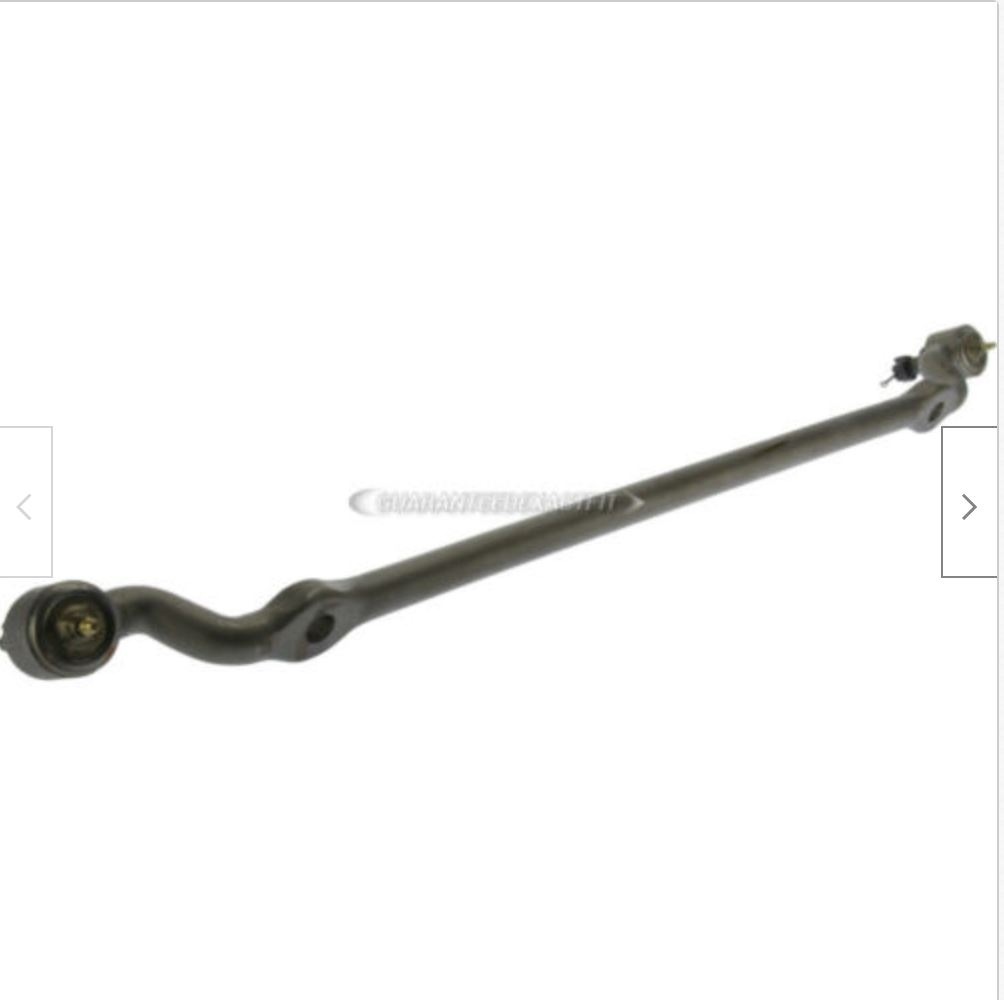
Adjustments to the center link geometry to make it acceptable for use in the application can be achieved by heating and bending the arm in a press. The cost for the materials above is in the $400-$600 range. not including hydraulic hoses.
The part that is difficult to replicate is the power steering pump. The early Vickers pump is fairly unique.
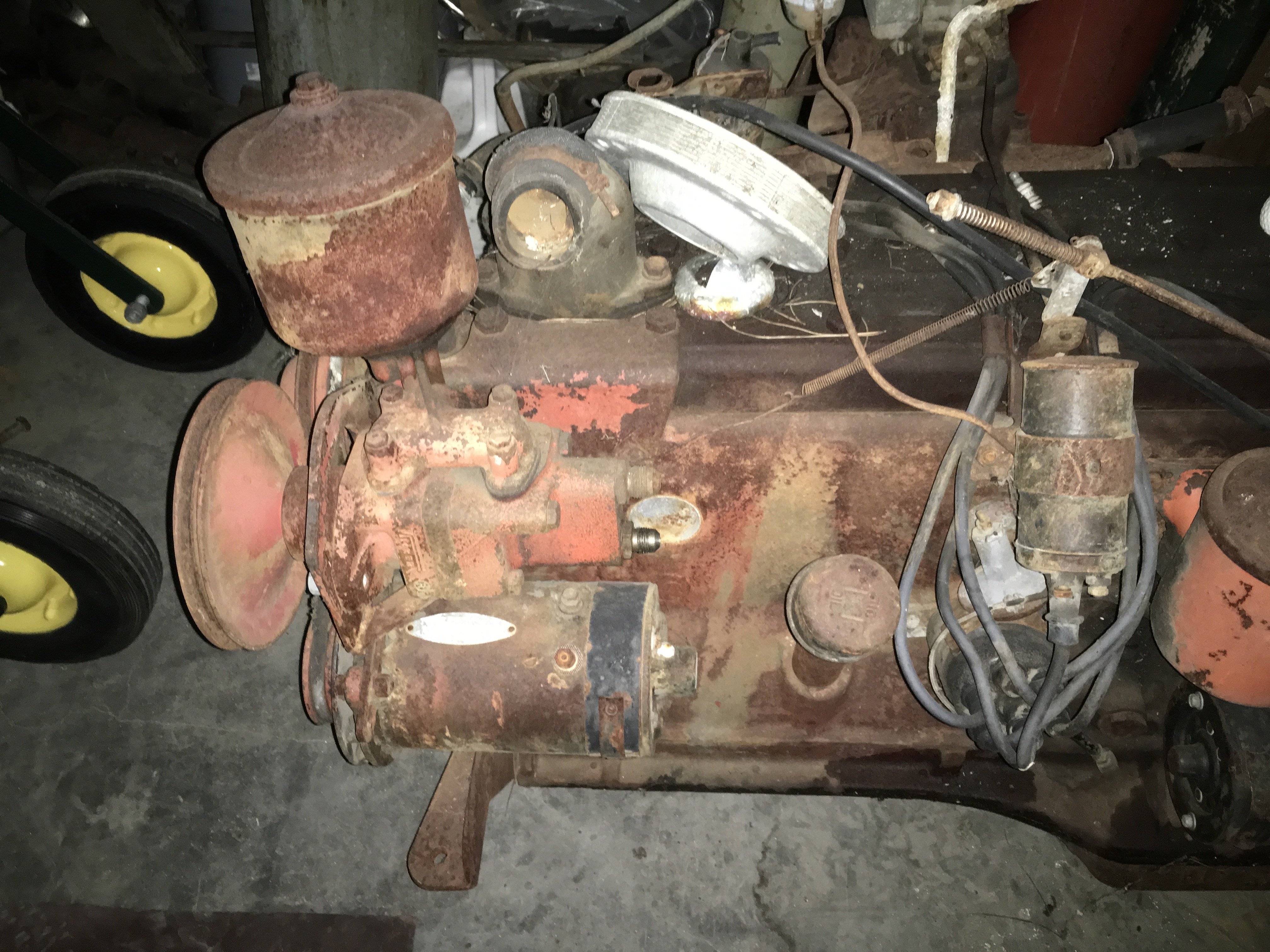
In the interest of staying true to the original design intent and manufacturer of the 1954 pump, the closest available product is the Vickers VTM42. It is still being manufactured. The major differences are the outlet and return locations.
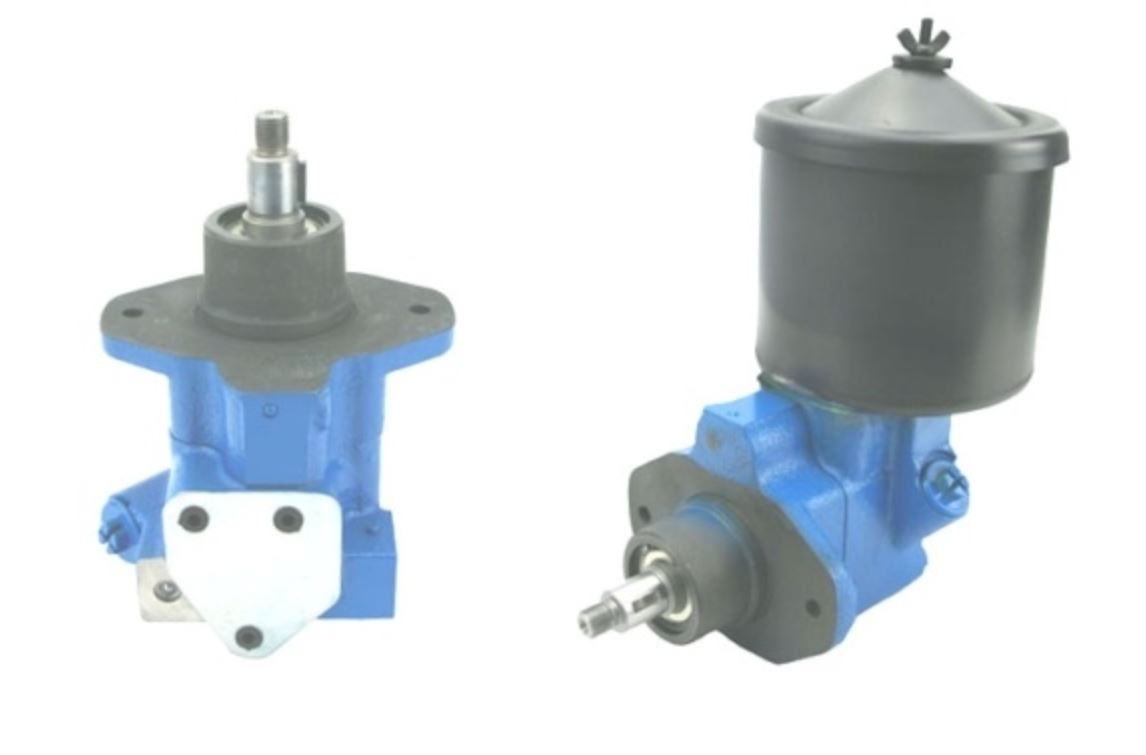
The VTM 42 is used in marine and truck applications, and this style of pump can be purchased for about $200. Bracketry and pulleys have not been designed or sourced at this time.
The low cost route is to use a Saginaw power steering pump for about $50, but it looks like a "modern" PS pump. The VTM42 would look correct in the engine compartment and would pass muster for a driver and/or local show car, however. I suspect the mounting dimensions of the VTM42 are similar to the original 1954 pump, which would offer the ability to install an original at a later date - or - if you have PS already and the original pump went bad, this newer model might be a suitable replacement until the original is rebuilt. the only issue I see is possible interference with the cooling system outlet hose, but an aluminum manifold can be fabricated to replicate the offset of the original reservoir.
I have to do something for my Hudson, as my wife is disabled and cannot drive a vehicle with manual steering. She lacks the strength to turn the wheel at rest or at low speeds. I've noticed I'm not as strong as I used to be - and I suspect I'll continue down this path as I get older. By installing the system described above, I should be able to drive mine until I'm no longer able to drive. The next caretaker can either leave it on, or return the steering system to manual with minimal effort. in any case, I'll have a power steering system which looks and functions similar to a 1954 system for about $1000.

Note the servo valve, which mounts on the drag link, is missing in this photo.
I realize this is old stuff to most HET members and folks on this forum, but maybe the next paragraphs and photos aren't.
Ford used an similar system for power steering, and introduced it at the same time as Hudson. The way things work in Detroit is vendors develop new products and systems at the behest of a manufacturer, and the vendor then sells said product/system to other manufacturers. I suspect the servo system was originally developed for Ford and then sold to Hudson after the fact, as I believe Ford first had it in 1953 and it didn't show up on Hudsons until 1954. In the Ford system, the assist cylinder and servo valve are part of the center link:

When I restore a vehicle, I try to make it so that any modification I make to the car can be undone by the next caretaker. I had a fairly highly modified, stock appearing car about 15 years ago which I sold to a friend - along with all the bits I'd taken off. He didn't desire such a wild ride, so he detuned it and re-mounted a bunch of the things I'd given him. So here's the thing - the cylinders and servo valves are widely available in the aftermarket, as Ford made millions of vehicles with this system.

Brand new servo valve.

New assist cylinder.
The assist cylinder doesn't really care where it's installed on the drag link, as it's not really part of the geometry of the steering system. On Hudsons, the attachment was part of the bell crank arm - but doesn't have to be. The cylinder can be fore or aft of the bell crank arm.
The trick to adapting these new components is a modified drag link. I believe it possible to use an existing center link from a Brand X vehicle , cut off one end and cut threads to attach the servo valve. The cylinder would be a few inches off from an original mounting point, but this is either a couple of new holes in the subframe rail or the welding of a mounting bracket.

Adjustments to the center link geometry to make it acceptable for use in the application can be achieved by heating and bending the arm in a press. The cost for the materials above is in the $400-$600 range. not including hydraulic hoses.
The part that is difficult to replicate is the power steering pump. The early Vickers pump is fairly unique.

In the interest of staying true to the original design intent and manufacturer of the 1954 pump, the closest available product is the Vickers VTM42. It is still being manufactured. The major differences are the outlet and return locations.

The VTM 42 is used in marine and truck applications, and this style of pump can be purchased for about $200. Bracketry and pulleys have not been designed or sourced at this time.
The low cost route is to use a Saginaw power steering pump for about $50, but it looks like a "modern" PS pump. The VTM42 would look correct in the engine compartment and would pass muster for a driver and/or local show car, however. I suspect the mounting dimensions of the VTM42 are similar to the original 1954 pump, which would offer the ability to install an original at a later date - or - if you have PS already and the original pump went bad, this newer model might be a suitable replacement until the original is rebuilt. the only issue I see is possible interference with the cooling system outlet hose, but an aluminum manifold can be fabricated to replicate the offset of the original reservoir.
I have to do something for my Hudson, as my wife is disabled and cannot drive a vehicle with manual steering. She lacks the strength to turn the wheel at rest or at low speeds. I've noticed I'm not as strong as I used to be - and I suspect I'll continue down this path as I get older. By installing the system described above, I should be able to drive mine until I'm no longer able to drive. The next caretaker can either leave it on, or return the steering system to manual with minimal effort. in any case, I'll have a power steering system which looks and functions similar to a 1954 system for about $1000.
0
Comments
-
Chuck, Great job on researching & writing this up! I believe I’m pretty familiar with that rabbit hole.... visit it every week come to think of it!0
-
I have, actually.Ken U-Tx said:Good luck on finding a new or rebuilt VTM 42 for under $200.Ken U-Tx said:The drag link and control valve on the original 54 setup in the photo you posted ARE there, the control valve is at the forward end of the hydraulic ram where the center steering arm ball and drag link ball joint go in. In the picture the ram has been swiveled 180 degrees so the rod end is point forward, whereas when it is installed the rod end with it's rubber cushioned bracket bolt to the inside of the left frame rail just ahead of the cross-member that goes under the transmission bell housing. I have removed and installed about 6 of these units over the last 30 some years. Adapting the Ford setup is not as simple as it may seem. The Hudson Saginaw unit does not share anything with the Ford unit.
Thank you for the clarification! I'm going to make the attempt and will let you know how it goes. I didn't say it was simple, and I didn't want to infer the parts were shared, either. The part which is important to me is to have a similar system built from new components which allows for conversion back to original by a future owner, if desired.
I don't like the idea of an electric power steering conversion, as the steering shaft has to be cut and welded to accept the Toyota unit. Additionally, as a third generation auto industry guy, I really don't want any Toyota bits on a Detroit car. Based on what the '54 PS units sell for plus reconditioning, I figure I can spend a little time and adapt existing new available parts to work with the original design intent.
0 -
I'm watching with interest. I am planing on adding power steering to my 51 Commodore. I do not want to change the Hudson front suspension, steering, and steering column & wheel. I agree on NO foreign parts. GM has what looks like a good system (see www.evwest.com). I do not mind welding the steering shaft if it is done right. As I see it the horn wire will be a problem with EPAS, no way through the unit for the horn wire. Using a modern steering box rotated 90 degrees (as discussed in another thread) still leaves the horn problem. I am still in the planing stage so I have time. Good luck
0 -
Thanks! It's either that or a go through all the Saginaw units and see if there's one which might work. I like the servo cylinder idea, as it matches the design intent, albeit with different components.Fred_Pitz said:I'm watching with interest. I am planing on adding power steering to my 51 Commodore. I do not want to change the Hudson front suspension, steering, and steering column & wheel. I agree on NO foreign parts. GM has what looks like a good system (see www.evwest.com). I do not mind welding the steering shaft if it is done right. As I see it the horn wire will be a problem with EPAS, no way through the unit for the horn wire. Using a modern steering box rotated 90 degrees (as discussed in another thread) still leaves the horn problem. I am still in the planing stage so I have time. Good luck
0 -
68-82 Corvettes used a similar looking ram type power assist unit. I believe that Lee Pontious uses one in his 41 short wheelbase pickup, with a more modern type GM pump.0
-
I'll have to look that up. Dad had a '68, and it was such a hot mess I tried to block it from my memory. I called on the Saginaw Steering Gear plants in the late 90's. They were the last of the coal-fired plants; the coal came up from Appalachia through the small town we lived in. Several trains a day. A recirculating ball power steering unit which is adaptable would be nice, but preserving what's there and replacing the drag link with a P/S system I think is ideal. It doesn't have to be a Vickers pump, BTW, - a Saginaw vane type will work as well, and is WAAY cheaper!54coupe said:68-82 Corvettes used a similar looking ram type power assist unit. I believe that Lee Pontious uses one in his 41 short wheelbase pickup, with a more modern type GM pump.
I am NOT trying to offend any Hudsonuts here. At the same time, what good is a perfectly restored manual steering Hudson if you can't enjoy it? Installing P/S from a later car is desirable, but it's still not original. I've watched the Model A guys go to B blocks, B cams, Brumfeld heads, Columbia two speeds, V-8 wires and F100 steering boxes in an effort to continue to enjoy their cars deep into their autumn years. This is what I'm trying to do here; design solutions to allow enjoyment of these wonderful cars for years to come.
0 -
I'll likely be needing a setup sooner than later. Not worried about the hoses. They can be hardlined to near the cylinder pivot and then bracketed to the drag link. I figure if it worked on about ten million cars, it will work here as well.Ken U-Tx said:I was going to look into having the integral ram/ control valve reproduced. The integral control valve mounted on the front of the ram reduces the mess of hoses or lines needed, as well as making it easier to maintain correct geometry of the whole setup.
0
Categories
- 36.9K All Categories
- 113 Hudson 1916 - 1929
- 20 Upcoming Events
- 92 Essex Super 6
- 28.6K HUDSON
- 572 "How To" - Skills, mechanical and other wise
- 995 Street Rods
- 151 American Motors
- 178 The Flathead Forum
- 49 Manuals, etc,.
- 78 Hudson 8
- 44 FORUM - Instructions and Tips on using the forum
- 2.8K CLASSIFIEDS
- 608 Vehicles
- 2.2K Parts & Pieces
- 77 Literature & Memorabilia
- Hudson 1916 - 1929 Yahoo Groups Archived Photos
